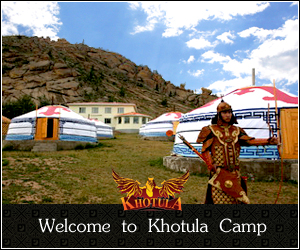Mongolian Ger Yurt
Yurt is one type of the human housing. Scientists consider that separation between nomadic herder tribes and hunter tribes was the main reason of the origin of Yurt. Most scientists who made studies on yurt hardly tried to reveal differences and similarities of demands of use yurt, traditional features of people who lived in yurt, their relations and distribution of yurt shaped residences. Modern Mongol Yurt has experienced a long way of changes made to its structure and designs since wigwags resided by ancient hunter tribes. There some evidences about earlier designs and shapes of yurt, relates back to 3000s BC.
Therefore scientific studies of Mongol Yurt are divided into 4 parts such as ancient study, ethnographical study, historical study and the study of literary. Ancient paintings on the rocks and potteries are the earliest historical evidence about the shapes and designs of Yurt. Mongol Yurt was originated thousands of years ago when Mongolians didn’t even begin to herd livestock. Ger and its design and structure have slowly changed throughout the history and finally found its own way to become independent residence and perfect collection of pieces.
The yurt or, as Mongolian’s call it, “gher” is an amazing product of the nomadic style of life, which has been transformed into present form and design over three thousand years. The Mongolian yurt has always been an important part of nomadic life as a dwelling place. The origins of the yurt go back to the beginning of humanity when people had to be constantly on the move.
Before they lived in flat sided teepees, then the dwelling became a conical kind of tent and finally became a modern yurt. The yurt is the most suitable home for the nomads who move perpetually through the steppes searching for new grazing lands. Living in yurts allows Mongolian nomads to live in perfect harmony with nature and the environment and to organize their life and livestock at the pace of seasons. This allows them to have a simple and healthy life. The great warrior Genghis khan’s campaigns were also accompanied by yurt camps. Genghis himself shunned life in a static palace for the more mobile yurt.
An average yurt measures 7 meters in diameter and 3 meters in height. The frame is made of high quality local timber, selected from the forest by a yurt-maker himself. The roof poles, roof ring, and supports can be ornately carved and painted. The covers are made of thick woolen felt with a cotton outer layer. Mongolians always put up their yurts with the door facing south. By doing this they can use the roof ring, along with the sun to effectively tell time.












